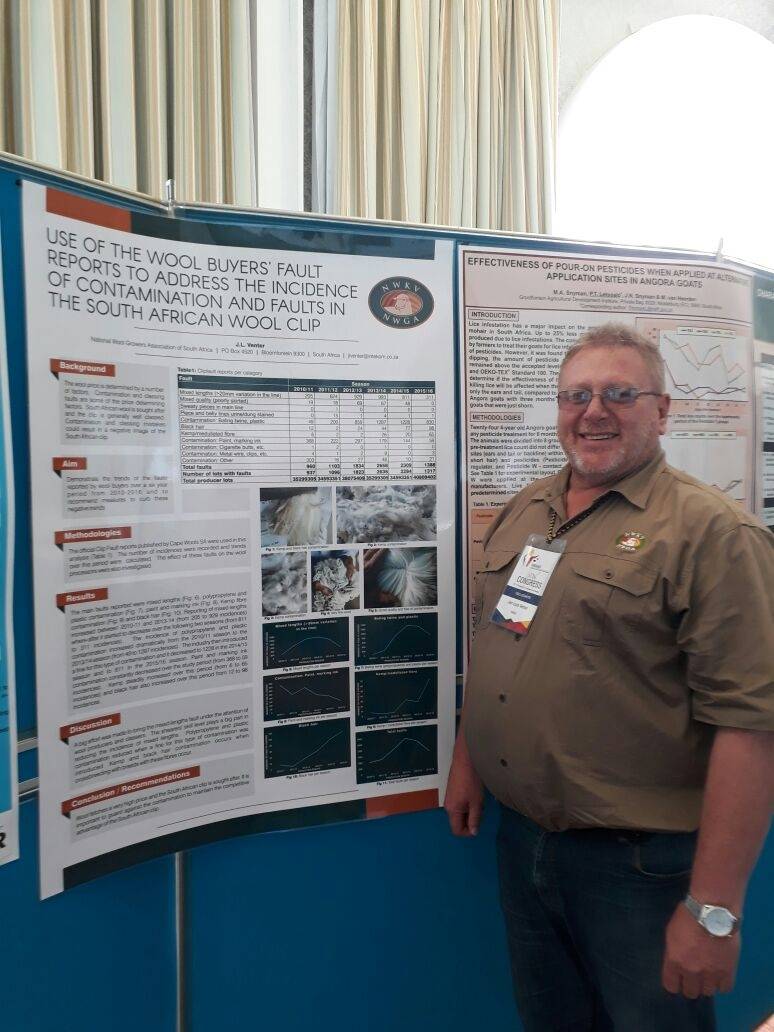Use of clip fault reports to address contamination

During the 50th congress of the South African Society of Animal Science (SASAS) held from 18-21 September 2017 in Port Elizabeth, Jan Louis Venter, NWGA Free State production advisor presented a poster on contamination of wool. The poster was titled “Use of the Wool buyers’ fault reports to address the incidence of contamination and faults in the South African wool clip”.
Content of Poster:
Background: The wool price is determined by a number of factors. Contamination and classing faults are some of the price determining factors. The South African wool is sought after and the clip is generally well classed. Contamination and classing mistakes could result in a negative image of the South African clip.
Aim: Demonstrate the trends of the faults reported by wool buyers over a six year period from 2010 to 2016 and to recommend measures to curb these negative trends.
Methodologies: The official Clip Fault reports published by Cape Wools SA were used in this analysis. The number of incidences was recorded and trends over this period were calculated. The effects of these faults on the wool processors were also investigated.
Results: The main faults reported were mixed lengths, polypropylene and plastic contamination, paint and marking ink, Kemp fibre contamination and black hair. Reporting of mixed lengths increased between 2010 and 11 and 2013 and 14 (from 205 to 929 incidences per annum) where-after it started to decrease over the following two seasons (from 811 to 311 incidences). The incidence of polypropylene and plastic contamination increased dramatically from the 2010/11 season to the 2013/14 season (from 49 to 1297 incidences). The industry then introduced a fine for this type of contamination and this contamination decreased to 1228 in the 2014/15 season and to 811 in the 2015/16 season. Paint and marking ink contamination constantly decreased over the study period (from 368 to 59 incidences). Kemp steadily increased over this period (form 6 to 65 incidences) and black hair also increased over this period from 12 to 98 incidences.
Discussion: A big effort was made to bring the mixed lengths fault under the attention of wool producers and classers. The shearers’ skill level plays a big part in reducing the incidence of mixed lengths. Polypropylene and plastic contamination reduced when a fine for this type of contamination were introduced. Kemp and black hair contamination occurs when crossbreeding with breeds with these fibres occur.
Conclusion/recommendations: Wool fetches very high prices and the South African clip is sought after. It is important to guard against the contamination to maintain the competitive advantage of the South African clip.

